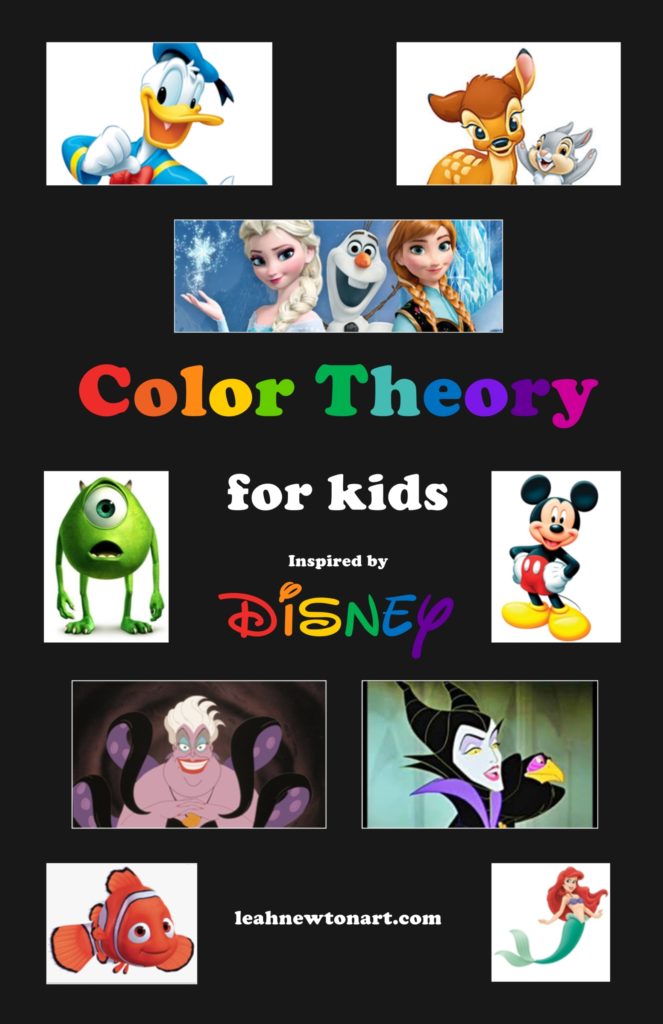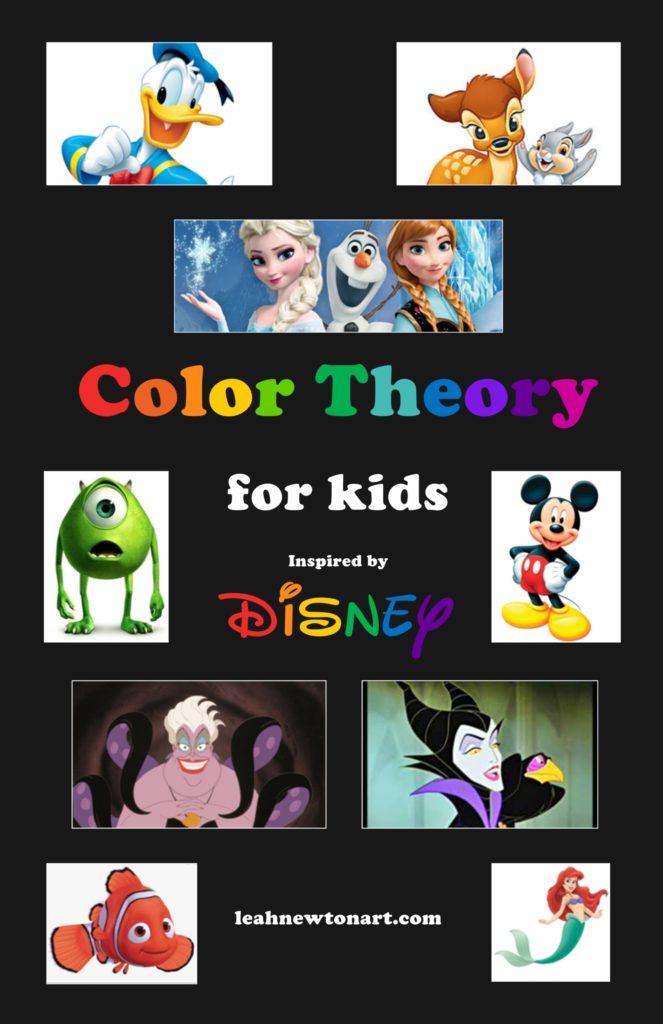This Color Theory for Kids lesson is inspired by Disney characters. It includes a PowerPoint presentation for children of all ages!

Sir Isaac Newton created “color theory.” He invented the Color Wheel in 1666. Color Theory merges science and art for visual effects. It is a guide for mixing colors, and combining them for desired visual effects.
You will be not be surprised to see these concepts being used in graphic art all around you! Consider all of the logos you see every day. They are on apps on your devices, fast food signs, and in every day products you purchase. If you think about it, most of the fast food logos use red, yellow, and blue. These are primary colors, which means they are strong, and catch our eyes easily. I mean, which brand doesn’t want their logo to be primary…or first!
Disney considers special combinations of colors for designing new characters for their movies.

Vocabulary
Below you will see the vocabulary words which are covered in this Color Theory for Kids PowerPoint Presentation lesson.
Primary – pry-merry (red, yellow, blue)
Secondary – second-ary (orange, green, purple (violet)
Tertiary – ter-she-ary (red/orange, orange/yellow, yellow/green etc)
Neutral – new-tral (brown, black, gray, white)
Complimentary – com-pli-ment-ary (red/green, orange/blue, yellow/purple)
Analogous – ah-nah-low-gus (colors in order on the color wheel in groups)
First, students will learn the basic concept for each vocabulary word. An example would be that “primary colors” are red, yellow and blue. Second, students will list some Disney characters that are mostly red, yellow and blue colors. Hint: Mickey Mouse is mostly Red and Yellow. Third, this presentation will show images of characters from Disney films that are mostly red, yellow and blue. Students will be able to see the combination of colors on the character. This will reinforce the vocabulary and concept.
This Color Theory for Kids lesson is wonderful for learning color theory for the first time, or as a support to reinforce learned concepts.
Here is the PowerPoint for your use. Please, if you share this, give credit to me and this site.


These projects are absolutely amazing, I’m sure my students will love them!
Thank you DaLisa! Let me know how it goes!
This is really wonderful stuff. Thank you so much for sharing this. My students will love it I am sure.
I am so glad you will be able to use this lesson! Let me know how it goes or how I can support you.
WOW! I love your Disney colour review. I’ll be using it to review colour theory with my 5th graders. Amazing work. Thank you for sharing
Awesome thanks!
Thanks for sharing.My students will surely love it!
This is so nice…Thank you for sharing this..
Dear Leah Newton/or admin,
Thank you for this nice presentation.
I am an artist/art teacher with a bachelor’s degree in fine art. For many years I just accepted that the six colors on the color wheel between the primaries and the secondaries were called tertiary colors because that was what I was taught and that is what soooo many professionals and people on the internet and in books taught. Then one day I found a statement by Robin Ruth Henderson; another definition of those particular colors. She says that they should be labeled as “intermediate” colors, not “tertiary”. She argues that the medical definition is the correct definition; that an “intermediate” color or “near related” color is made by mixing a primary and a secondary color. Tertiary colors, however, are on the third color wheel; the first color wheel being the primaries (red, yellow, blue). These mixed together produce the second color wheel or secondaries (green, orange, purple). But when you mix any two secondaries together you get the third color circle or tertiaries (russet, citron, slate). This information does not appear on the color wheel. After reading this definition it made so much more sense to me! This is now what I teach. I hope this information is of interest to you as well.
Oh wow I really appreciate this! I am going to look into it further and consider changing my lesson. I love how we reach out and support one another!